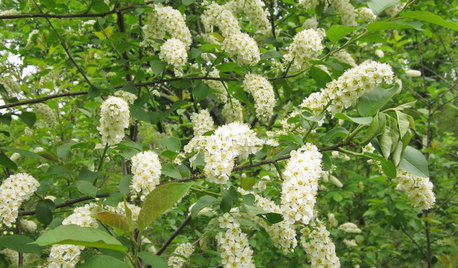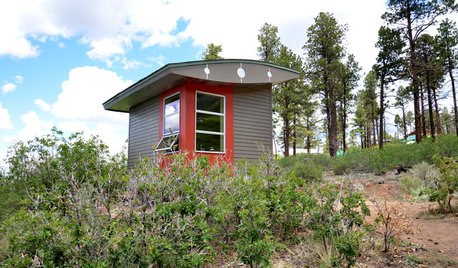Girdled trees
olpea
11 years ago
Related Stories

GARDENING GUIDESTree Care: Common Tree Diseases and What to Do About Them
Learn to recognize trees that may be affected by diseases or pests so you can quickly take action
Full Story
GARDENING GUIDESWhen and How to Plant a Tree, and Why You Should
Trees add beauty while benefiting the environment. Learn the right way to plant one
Full Story
FALL GARDENING11 Trees for Brilliant Fall Color
Give your landscape the quintessential look of autumn with the red, orange and yellow leaves of these standouts
Full Story
TREESNative Plant Alternatives to Invasive Common Buckthorn
Learn how to identify and control this aggressive plant, and what to grow in its place
Full Story
GARDENING GUIDESGarden Myths to Debunk as You Dig This Fall and Rest Over Winter
Termites hate wood mulch, don’t amend soil for trees, avoid gravel in planters — and more nuggets of garden wisdom
Full Story
SMALL SPACESCalm Yourself in a Former Hippie Commune’s Tiny Hut
Need to relax? Check into this simple, secluded lodging at a New Mexico retreat and say, “Om”
Full Story
WORKING WITH PROSWhat Do Landscape Architects Do?
There are many misconceptions about what landscape architects do. Learn what they bring to a project
Full Story
LANDSCAPE DESIGNThis Hillside Garden Succeeds on Multiple Levels
Once a kids’ playspace, this terraced backyard now has a hot tub, dining area and other lounging spots for grown-up fun
Full Story
WINTER GARDENINGPruning Secrets for Exquisite Roses
Encourage gorgeous blooms year after year with this time-tested advice on how to prune your rosebush in winter for health and shape
Full Story





fruitnut Z7 4500ft SW TX
alan haigh
Related Professionals
Wrentham Landscape Architects & Landscape Designers · Hershey Landscape Architects & Landscape Designers · Oconomowoc Landscape Architects & Landscape Designers · South Elgin Landscape Architects & Landscape Designers · Taylorsville Landscape Architects & Landscape Designers · Newcastle Landscape Architects & Landscape Designers · Aurora Landscape Contractors · Barrington Landscape Contractors · Clayton Landscape Contractors · Duarte Landscape Contractors · Elmhurst Landscape Contractors · Fountain Valley Landscape Contractors · Holland Landscape Contractors · Mendota Heights Landscape Contractors · North Haven Landscape Contractorscanadianplant
olpeaOriginal Author
alan haigh
theaceofspades
canadianplant
olpeaOriginal Author